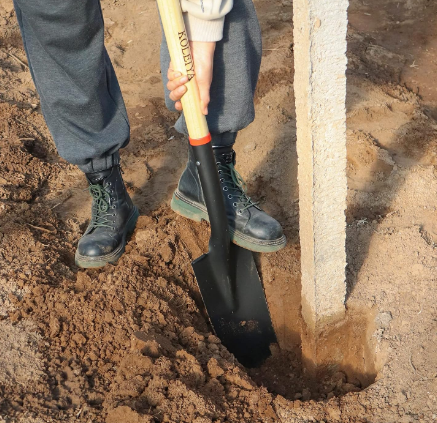
Boost Your Health with Organic Wheatgrass Seeds from Back to the Roots
February 18, 2025
Experience Freshness with Lettuce Salad Garden Seeds
February 22, 2025As you walk down the fertilizer aisle in the center of your garden or home improvement store, you may notice a wide variety of fertilizer recipes. You’ll see bags, bottles, powders, granules, pills, sprays, and concentrates. In addition, you will find more and more organic fertilizers and “earth-friendly” fertilizers. Knowing your choices in detail can help you choose the best foods for your flowering plants.

Complete Fertilizer
For most flower gardeners, a complete fertilizer is necessary to provide the plant with the three main elements it needs to thrive:
- Nitrogen (N): Promotes the growth of branches and leaves
- Phosphorus or phosphate (P): Promotes flowering and fruit formation
- Potassium or potassium salt (K): Develops healthy root systems
The fertilizer package will list the three main nutrients (sometimes referred to as “NPK”) in the exact order, with the numbers representing the percentage of each nutrient relative to the other minor nutrients and filling ingredients. For example, a 10-10-10 fertilizer contains 10% of each NPK nutrient. 10-30-20 fertilizers contain three times as much phosphorus as nitrogen. Filler ingredients are inert materials that add weight and volume, such as limestone, sawdust, clay (in powder formulations) or water (in liquid fertilizers).
To stimulate flowering, choose fertilizers with a higher phosphorus content than nitrogen and potassium. Healthy flowers start with vigorous root systems, and supplementing with potassium can ensure that your flowers get off to a good start.
Chemical Fertilizer
Fertilizer manufacturers make artificial fertilizers by combining inorganic chemicals to form compounds such as ammonium nitrate or magnesium sulfate. Some of the advantages of fertilizers are that they are inexpensive, readily available, and fast-growing plants, such as annual flowers, can absorb nutrients quickly (unless formulated as a slow-release fertilizer). Disadvantages include the risk of overapplication leading to combustion, as well as the lack of any soil modification properties.
Fertilizers are available in a variety of formulations, including granules, concentrates, and powders. Some products come in pre-metered packaging and are designed to be added to watering cans, making it easy for gardeners to apply them to containers, houseplants, or landscaping.

Foliar Fertilizer
Foliar fertilizer is the liquid nutrients that plants absorb through their leaves. Not all flowers absorb nutrients efficiently in this way, as waxes and hairs on certain leaves can hinder nutrient absorption. Flowering plants don’t get all the nutrients they need from their leaves, but you can quickly solve some nutrient deficiencies by using foliar fertilizers. Potassium is an easily absorbed nutrient in foliar fertilization, so foliar fertilisers are used in the garden to address potassium deficiency.
If your flowers show signs of losing green and their leaves turning yellow, your plant may be deficient in iron. Sometimes, the quick results of foliar fertilization can help.
Organic Fertilizer
Organic fertilizers are derived from living organisms, such as animal manure, fish milk, leaf mold, and abiotic organisms, such as phosphate rock or green sand. Organic fertilizers not only provide essential nutrients to flowers, but also improve the fertility of the soil. There are several advantages to using organic fertilizers:
- Do not burn the plant
- Strengthens the plant’s immune system
- Non-toxic to beneficial insects and wildlife
- Remains active in the soil for a long time

The disadvantages of organic fertilizers include a higher cost, an attractive taste for some pets, and a limited formulation. Organic fertilizers are not a problem that can be solved overnight – they won’t correct severe nutrient deficiencies anytime soon.
Simple Fertilizer
If soil tests show a deficiency of one major nutrient, you can buy a simple fertilizer that contains only nitrogen, phosphorus, or potassium as a stand-alone component. Simple fertilizers can be chemical fertilizers or organic fertilizers. An example of a simple nitrogen fertilizer is a nitrogen fertilizer that lists only urea or ammonium sulfate as a component. Simple phosphate fertilizers may list superphosphate or ground mineral phosphate as ingredients. Potash fertilizers may have potassium chloride listed on the container.
Slow-Release Fertilizer
Technically, all organic fertilizers are slow-release because organic matter takes time to decompose in the presence of soil microorganisms. The slowest acting organic fertilizers include insoluble mineral fertilizers such as rock potassium and other rock powders.
Gardeners who prefer to fertilize their plants infrequently can use slow-release fertilizers, which are coated or encapsulated to control the release of fertilizer over a period of weeks or months. These types of fertilizers are particularly suitable for indoor plant care and outdoor containers.



